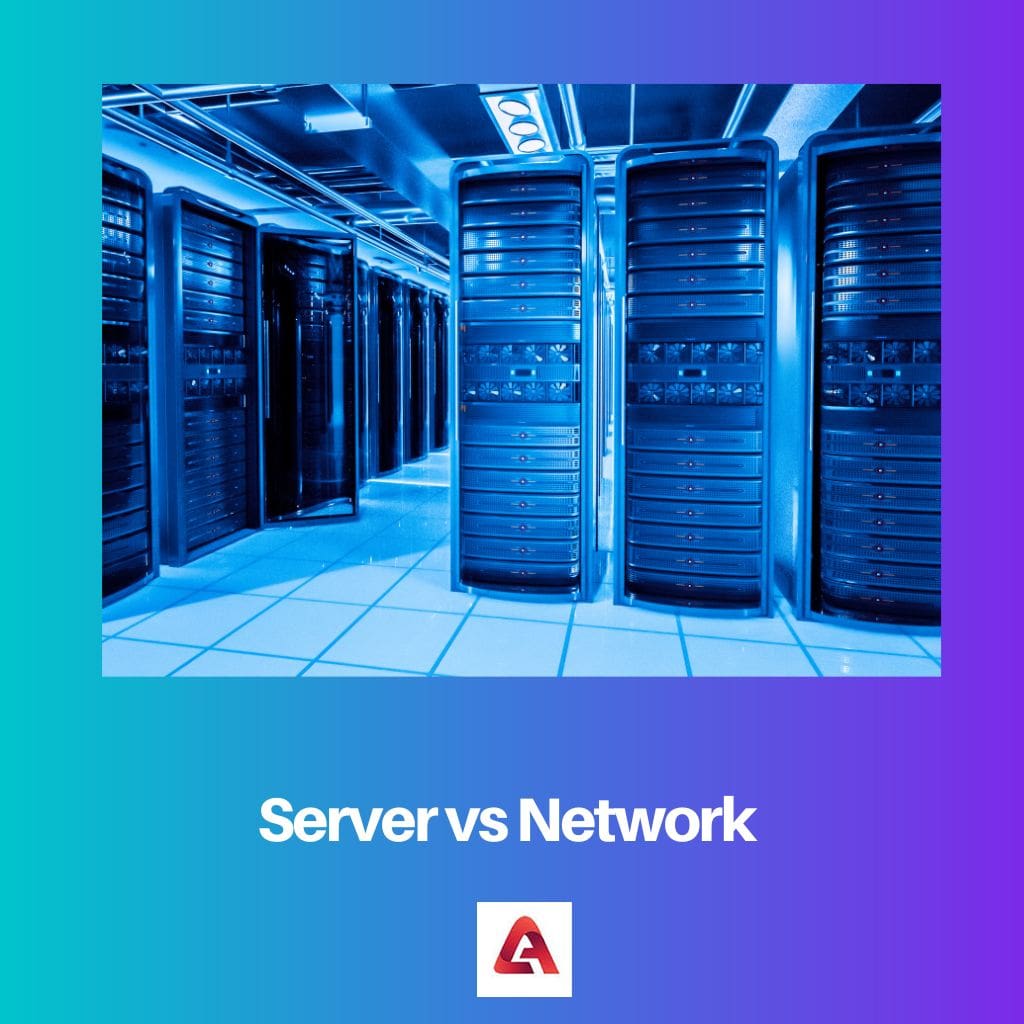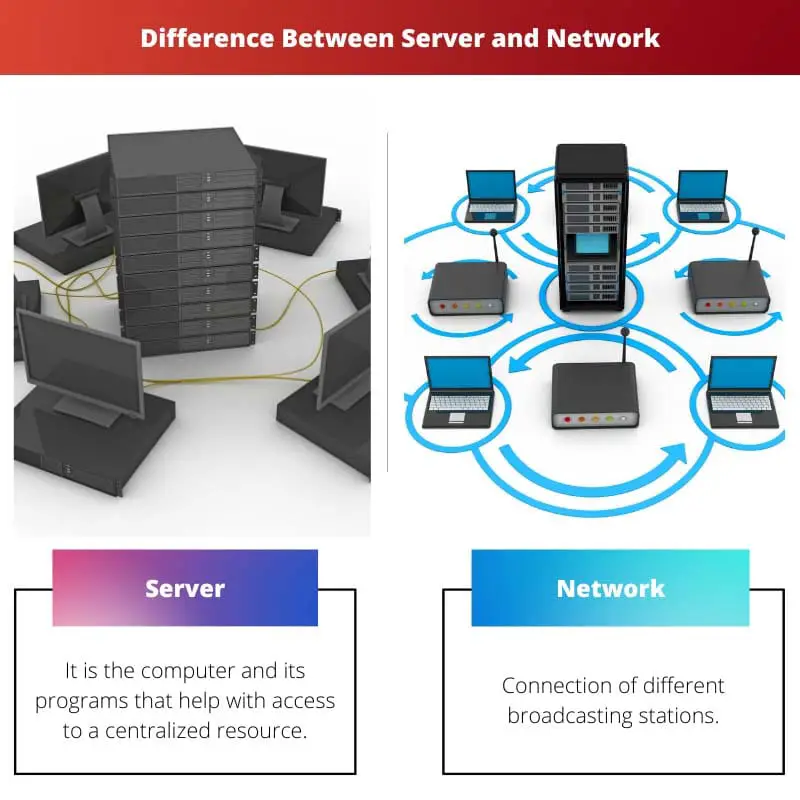A server manages access to a network’s hardware, software, and other resources and serves as a centralized storage space for programs, data, and information. A network, on the other hand, is a collection of computers and devices that are linked together, wirelessly, via communications devices and transmission media.
Key Takeaways
- A server is a computer or system that provides resources, data, or services to other computers, while a network is a collection of interconnected devices that share data and resources.
- Servers play a crucial role in a network, facilitating device communication and data sharing.
- Networks can be wired or wireless, while servers are categorized based on their functions, such as web servers, file servers, or mail servers.
Server vs Network
The difference between server and network is that a server is the computer or computers, as well as their programs, that aid in the management of access to a centralized resource or service inside a network via numerous devices, whereas a network is a collection of several computers and different broadcasting systems.

Servers can perform a variety of tasks known as “services,” such as exchanging data or resources across several clients or doing calculations on a client’s behalf. A server is a piece of software or computer infrastructure.
Servers are frequently organized based on their rationale. Database servers, print servers, gaming servers, file servers, and application servers are examples of common servers.
The network connects several broadcasting stations that connect multiple platforms and aid in the distribution of information through the system. A network is a collection of PCs, servers, centralized computers, organized gadgets, peripherals, or other devices that are linked together to allow information sharing.
Networks are distinguished by the hardware used to connect computers and devices, such as fiber optics, Ethernets, and power lines.
Comparison Table
| Parameters of Comparison | Server | Network |
|---|---|---|
| Description | It is the computer and its programs that help with access to a centralized resource. | Connection of different broadcasting stations. |
| Computers | One computer | Several computers |
| Management | A person controls everything. | Every computer and the user manage everything. |
| Task Performance | It can perform various tasks. | It has a purpose and only tasks that are related to it. |
| Operating System | The operating systems works on individual devices. | One operating system manages everything. |
What is Server?
A server program anticipates and satisfies needs from customer applications, which may be running on the same or other PCs, in the customer/server programming model.
A server can be both software and hardware. A server is a component of a computer that allows data and resources to be shared with another computer or device.
Mainframe computers were utilized as servers in the beginning. In other circumstances, minicomputers were also utilized.
During this time, these servers did all of the work.
In any case, many servers today are shared servers that can handle email, DNS, FTP, and even different sites as a result of a web server. As a result, when servers fail, it can generate a slew of problems for both system clients and the company.
To alleviate these issues, servers are frequently top-of-the-line PCs configured to blame tolerant.
Client-server systems use the request-response concept, in which a client sends a request to the webserver, which performs some action and returns an answer to the browser, with a concluding remark or acknowledgment.
A server maintains a broadcaster’s hardware, software, and other facilities, as well as serves as a centralized storage site for programs, files, and material. At any given time, servers can n host anywhere from two to thousands of networked PCs.
To pull content, information, and programs from a server, computer systems or terminals are employed. An interface is a computer with a display, keyboard, and memory.
Customers may be offered a variety of services by the server. It can also distribute resources to several clients and perform calculations on their behalf.
Furthermore, the server is capable of servicing several customers at once. A client can access services from multiple servers.

What is Network?
The Internet is an amazing example of a network since it connects a large number of people all over the world. PCs that are part of a system are classified as servers or workstations.
Servers are not used by individuals but rather run continually to provide “services” to other PCs (and their clients) on the system.
Networks are a form of broadcasting technology that broadcasts signals via antennas. Antennas are spaced at specific intervals.
When a signal approaches an antenna, it is amplified before moving on to the next one. When the signal arrives at the location where the channel must be viewed, the appropriate antenna amplifies and displays it.
Furthermore, networks can be categorized based on their scale. Local area networks and wide area networks connect local and large geographic areas, respectively, whilst a personal area network connects PCs to nearby devices such as printers or fax machines.
A functional relationship can also be used to categorize a network. A network can be peer-to-peer, linking two or more computers or devices, or client-server, connecting two or more computers or devices.
In a client-server network, the server captures and “serves” data to the network’s computers and other devices.

Main Differences Between Server and Network
- A server is several or a single computer along with their programs that help out with the connection to a centralized resource and various devices. On the other hand, the network is a connection of various broadcasting stations that connect several platforms with one another.
- A server has a single computer that consists of all the hardware, software, and program access that is required to provide centralized storage, whereas a network consists of several computers that connect with each other and communication devices.
- On a server, a person controls and manages everything for all the devices that are connected. On the other hand, in a network, each computer, and user help control and manage the entire system.
- A server has a dedicated purpose, and it only tends to perform tasks that are related to this purpose. A network has a feature to perform various tasks.
- A server has its own operating system that will help manage everything, whereas a network is managed with the operating systems on the individual devices.






